European
Type of resources
Available actions
Topics
INSPIRE themes
Keywords
Contact for the resource
Provided by
Years
Formats
Representation types
Update frequencies
status
Scale
Resolution
-
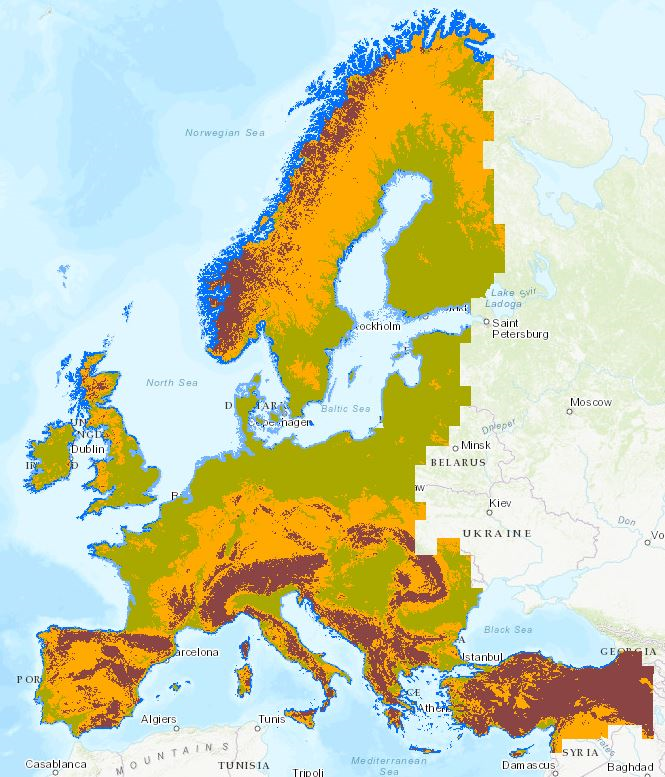
This layer defines homogeneous areas as function of height, slope and distance to the sea. The Elevation Breakdown is used to allocate Land Cover Changes into homogeneous areas as function of height, slope and distance to the sea. It defines five relief typologies: 1) Low coasts, 2) High Coasts, 3) Inlands, 4) Uplands and 4) Mountains. The previous enumeration corresponds to values in the grid.This layer is an updated version using similar methodology to the one created on 2006 (same classes and thresholds) but it has been generated using up-to-date high resolution datasets (EU-DEM) in order to create a more accurate layer.
-

This personal geodatabases (compatible Access 1997 and beyond, ArcGis® 9.3.0 and beyond) contains the aggregation catchments datasets of Ecrins v1.0 The purpose of Ecrins is modelling and homogeneous assessment of any data sets and information in relation with continental catchment systems. The WFD is the main driver of creation of such aggregates. The uppermost aggregate of the WFD is the “river basin district” that is not hydrological entity. It is analysed as i) all those FECS being in majority in the official RBD delineation, ii) all those FECs, topologically connected, that are the closet shaping of the RBD, the “functional RBD”. For example, the upper Garonne is in the first case attached the Ebro RBD and to the Garonne functional RBD because the water empties in the Gironde, not in the Mediterranean RBD sizes lay in a wide range. Two categories of sub-basins have been designed, the “sub-basins Strahler, aggregated from a Strahler order criterion and the natural sub-basins, aggregated from a main affluent criterion. Both apportion functional RBDs. The tables are C_B, the catchments that empty on a se-shore (as the seas from SeaVox, care taken of islands: e.g. England and France vs. British Channel are different C_B, despite same sea shore) RBD_Int_clp are the RBDs, dissolved as international RBDs; C_FRBD functional RBDs C_SS: sub-basins based on Strahler definition, C_SB: sub-basins natural C_NUTS: harmonised table of “pseudo nuts” used to document FECs (largest share of FEC in a NUT). NUT level has been selected to match best French NUTS2, making appropriate aggregate in those countries not using the NUTs classification; C_try: delineation of countries to which FECs have been set. The ID of each feature in each feature class are those in the C_Zhyd table of EcrFEC. Full documentation is in EEA technical report 9/2012, downloadable from the EEA website.
-
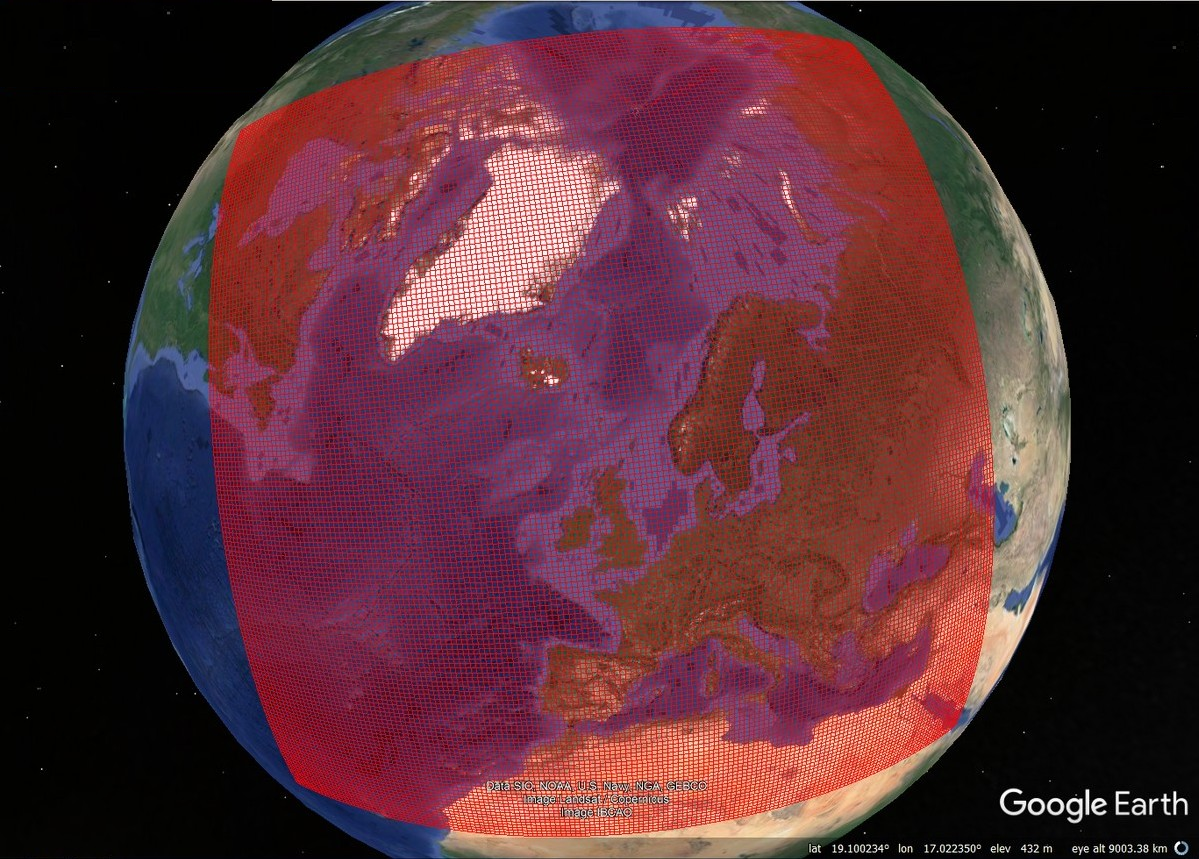
This dataset is an INSPIRE compatible grid of 50 km covering the whole Europe.
-
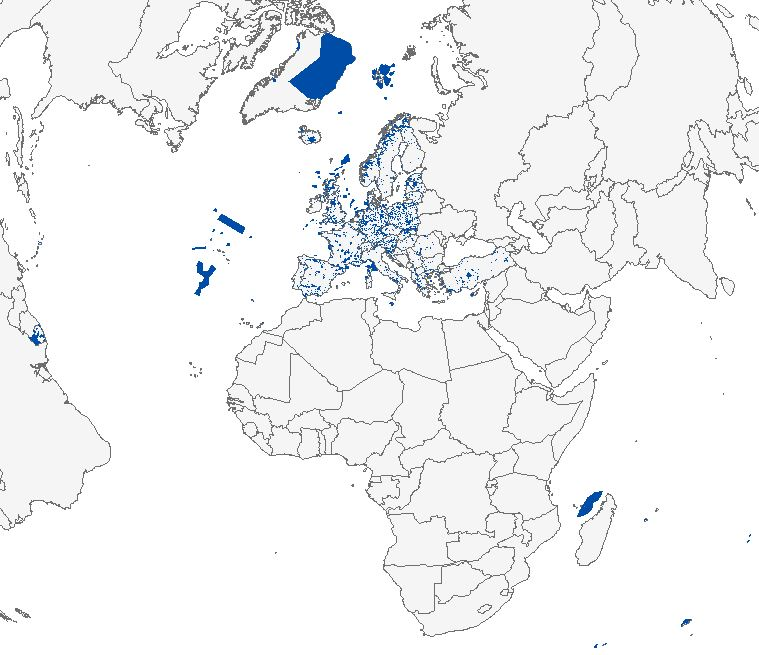
The Common Database on Designated Areas (CDDA) is more commonly known as Nationally designated areas. It is the official source of protected area information from European countries to the World Database of Protected Areas (WDPA). The inventory began in 1995 under the CORINE programme of the European Commission. It is now one of the agreed Eionet priority data flows maintained by EEA with support from the European Topic Centre on Biological Diversity. The CDDA data can be queried online in the European Nature Information System (EUNIS). Geographical coverage of GIS vector boundary data: Albania, Austria, Belgium, Bosnia and Herzegovina, Bulgaria, Croatia, Cyprus, Czech Republic, Denmark, Estonia, Finland, France, Germany, Greece, Hungary, Iceland, Ireland, Italy, Kosovo under UNSC Resolution 1244/99, Latvia, Liechtenstein, Lithuania, Luxembourg, the North Macedonia, Malta, Montenegro, the Netherlands, Norway, Poland, Portugal, Romania, Serbia, Slovakia, Slovenia, Spain, Sweden, Switzerland and United Kingdom. EEA does not have permission to distribute some or all sites reported by Estonia, Ireland, Romania and Turkey. When re-using the data, copyright is to be mentioned specifically for Estonia and for Finland: "Estonian Environmental Register 01.01.2017; "©Finnish Environment Institute, 2017".
-

The Common Database on Designated Areas (CDDA) is more commonly known as Nationally designated areas. It is the official source of protected area information from European countries to the World Database of Protected Areas (WDPA). The inventory began in 1995 under the CORINE programme of the European Commission. It is now one of the agreed Eionet priority data flows maintained by EEA with support from the European Topic Centre on Biological Diversity. The CDDA data can be queried online in the European Nature Information System (EUNIS). Geographical coverage of GIS vector boundary data: Albania, Austria, Belgium, Bosnia and Herzegovina, Bulgaria, Croatia, Cyprus, Czech Republic, Denmark, Estonia, Finland, France, Germany, Greece, Hungary, Iceland, Ireland, Italy, Kosovo under UNSC Resolution 1244/99, Latvia, Liechtenstein, Lithuania, Luxembourg, the North Macedonia, Malta, Montenegro, the Netherlands, Norway, Poland, Portugal, Romania, Serbia, Slovakia, Slovenia, Spain, Sweden, Switzerland, Turkey and United Kingdom. EEA does not have permission to distribute some or all sites reported by Austria, Estonia, Hungary, Ireland, Romania and Turkey. When re-using the data, copyright is to be mentioned specifically for Estonia and for Finland: "Estonian Environmental Register 01.01.2016; "©Finnish Environment Institute, 2016".
-
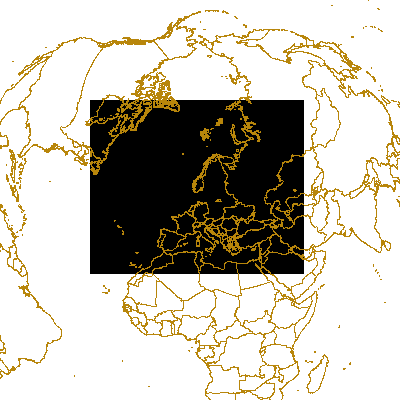
The grid is based on proposal at the 1st European Workshop on Reference Grids in 2003 and later INSPIRE geographical grid systems.
-
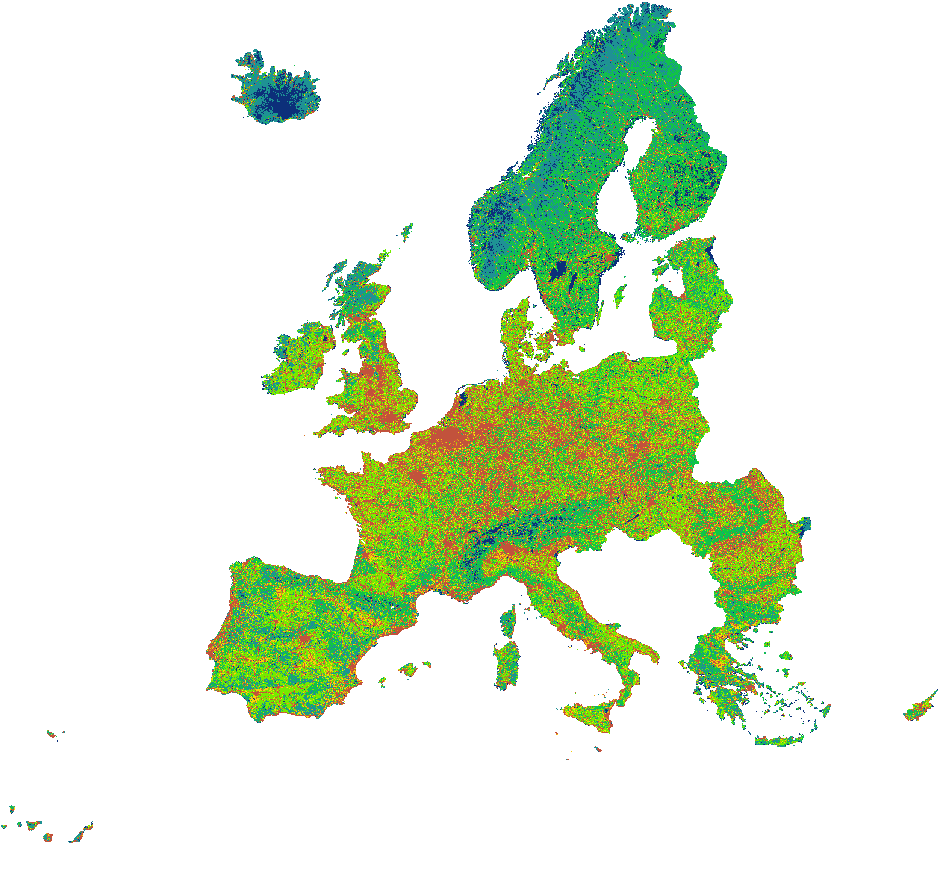
Within the European Union, the Environmental Noise Directive (END, 2002/49/EC) defines quiet areas outside cities as those areas delimited by national authorities that are undisturbed by noise from traffic, industry or recreational activities. The report ‘Quiet areas in Europe: the environment unaffected by noise pollution,’ provides a first mapping assessment of potential quiet areas in Europe’s rural regions. Approximately 18% of Europe’s area can be considered quiet, but 33% is potentially affected by noise pollution, the report finds. This dataset underpins the assessment and is based on the quietness suitability index (QSI), which provides the overview with the highest (QSI=1) and lowest (QSI=0) proportion of potential quiet areas in Europe. The data set is provided in both GDB and TIFF formats.
-
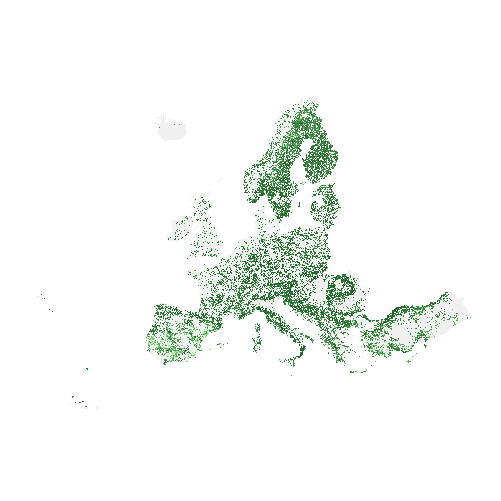
The high resolution forest product consists of three types of (status) products and additional change products. The status products are available for the 2012, 2015 and 2018 reference years: 1. Tree cover density providing level of tree cover density in a range from 0-100%; 2. Dominant leaf type providing information on the dominant leaf type: broadleaved or coniferous; 3. A Forest type product. The forest type product allows to get as close as possible to the FAO forest definition. In its original (20m) resolution it consists of two products: 1) a dominant leaf type product that has a MMU of 0.5 ha, as well as a 10% tree cover density threshold applied, and 2) a support layer that maps, based on the dominant leaf type product, trees under agricultural use and in urban context (derived from CLC and high resolution imperviousness 2009 data). For the final 100m product trees under agricultural use and urban context from the support layer are removed. The high resolution forest change products comprise a simple tree cover density change product for 2012-2015 (% increase or decrease of real tree cover density changes). The production of the high resolution forest layers was coordinated by the European Environment Agency (EEA) in the frame of the EU Copernicus programme.
-

The high resolution forest product consists of three types of (status) products and additional change products. The status products are available for the 2012, 2015 and 2018 reference years: 1. Tree cover density providing level of tree cover density in a range from 0-100%; 2. Dominant leaf type providing information on the dominant leaf type: broadleaved or coniferous; 3. A Forest type product. The forest type product allows to get as close as possible to the FAO forest definition. In its original (20m) resolution it consists of two products: 1) a dominant leaf type product that has a MMU of 0.5 ha, as well as a 10% tree cover density threshold applied, and 2) a support layer that maps, based on the dominant leaf type product, trees under agricultural use and in urban context (derived from CLC and high resolution imperviousness 2009 data). For the final 100m product trees under agricultural use and urban context from the support layer are removed. The high resolution forest change products comprise a simple tree cover density change product for 2012-2015 (% increase or decrease of real tree cover density changes). The production of the high resolution forest layers was coordinated by the European Environment Agency (EEA) in the frame of the EU Copernicus programme.
-

The Copernicus High Resolution Forest Layer Tree Cover Change Mask (TCCM) 2015-2018 raster product provides information on the change between the reference years 2015 and 2018 and consists of 4 thematic classes (unchanged areas with no tree cover / new tree cover / loss of tree cover / unchanged areas with tree cover) at 20m spatial resolution and covers EEA38 area and the United Kingdom. The production of the High Resolution Forest layers was coordinated by the European Environment Agency (EEA) in the frame of the EU Copernicus programme. The High Resolution Forest product consists of three types of (status) products and additional change products. The status products are available for the 2012, 2015 and 2018 reference years: 1. Tree cover density providing level of tree cover density in a range from 0-100%; 2. Dominant leaf type providing information on the dominant leaf type: broadleaved or coniferous; 3. A Forest type product. The forest type product allows to get as close as possible to the FAO forest definition. In its original (20m) resolution it consists of two products: 1) a dominant leaf type product that has a MMU of 0.5 ha, as well as a 10% tree cover density threshold applied, and 2) a support layer that maps, based on the dominant leaf type product, trees under agricultural use and in urban context (derived from CLC and high resolution imperviousness 2009 data). For the final 100m product trees under agricultural use and urban context from the support layer are removed.
 RUC Geo-Data catalogue
RUC Geo-Data catalogue